Kiva /Cucumis metuliferus/ is the fruit of an annual plant of the liana-shaped family Cucurbitaceae, which reaches up to 3 m in height. Kiva is called prickly cucumber, or horned melon. The home of Kiva is the Kalahari Desert in Africa, but it is cultivated in Chile, California, New Zealand and Australia. The world market gets it very late - not until the 20th century.
The name Kiva comes from New Zealand and comes from the words for kiwis and bananas because resembles the taste of these fruits.
Kiva is a very close relative of the cucumber, and the appearance can be likened to a melon with horns. Ripe fruit has a yellow-green color on the outside and the inside looks like a green jelly with seeds. Due to its strange appearance Kiva is often overlooked. In some countries, it is grown as a vegetable, but because of its tropical origin and flavor, it is considered a fruit.
Kiva is considered fairly new and exotic culture that grows quite rare and of little economic importance. However, recently more and more places around the world, have become more attractive and are a sought for growing fruit. The prickly cucumber reaches a length between 25-30 cm and is covered with spines that are very sharp.
Appropriate temperature for growing Kiva is at 25 degrees, it does not tolerate any frost. Seedlings are transplanted out only after the passing of the last spring frost.
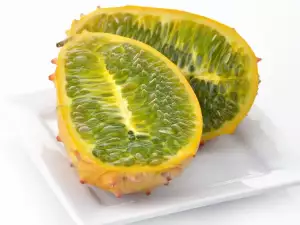
Composition of Kiva
Kiva is quite unfairly overlooked because it is an excellent source of vitamins A and C, and the B vitamins group. It is a low-calorie product, suitable for compliance with dietary regimes.
100 grams of Kiva contains 44 calories, 26.1 g fat, 7.5 g carbohydrates, 1.8 g protein.
Selecting and storing Kiva
You'll know a ripe Kiva fruit by a yellow-green color outside and resembling green jelly interior. The price varies. Kiva is stored very easily - at room temperature for up to six months. You can freeze or dry Kiva, but keep it in the fridge.
Kiva in cooking
If you are tired of the monotony and want to try something different, Kiva is the right choice for you. For fresh consumption, Kiva is washed and cut through the middle into two parts.
Inside you will find a refreshing green flesh that has many seeds. The flesh may be scooped with a spoon, along with seeds. Most commonly, the fruit is eaten raw, it tastes like melon, kiwi and cucumber, but it smells more like a banana. Have it with cream and season with lemon juice.
Kiva can be used as a delicious addition to salads, desserts, fish or seafood. Among other things, Kiva can be used as a unique decoration. Kiva is suitable for fruit salads and exotic drinks.
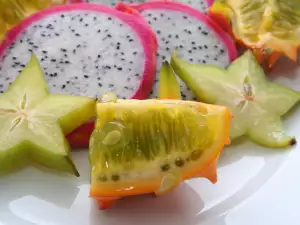
Benefits of Kiva
This exotic fruit is not only delicious and refreshing, but also very useful. It is a good source of vitamins and minerals, and its seeds contain a number of beneficial fatty acids, including oleic and linoleic acid.
Linoleic acid is a polyunsaturated omega-6 fatty acid, which is essential for maintaining good health. Moreover, it is a valuable ingredient for beautiful and healthy skin.
Oleic acid in turn helps to improve immune function, and significantly reduces the risk of cardiovascular disease. Kiva seeds are rich in beta-carotene, which not only supports the immune system, but also keeps your eyes and skin healthy.
Kiva is useful for the prevention of cancer, because it protects the body from the damaging effects of free radicals. The energy and calorific values of Kiva are very low, so it is suitable for inclusion in diets for weight loss.
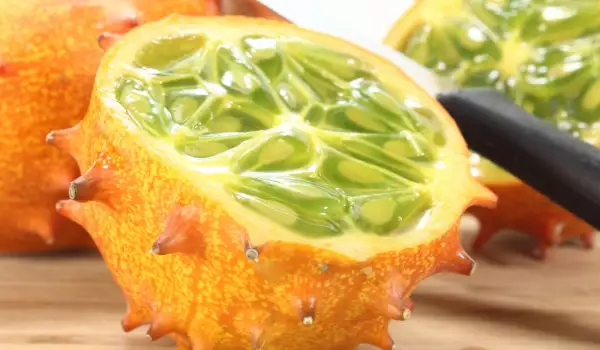
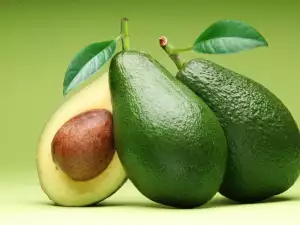
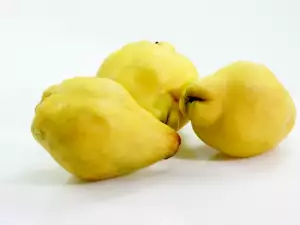
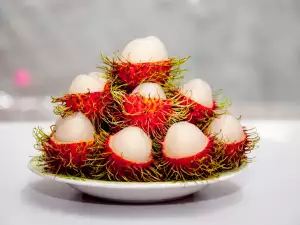
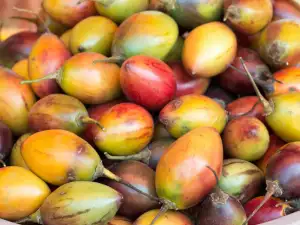
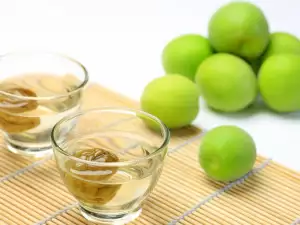
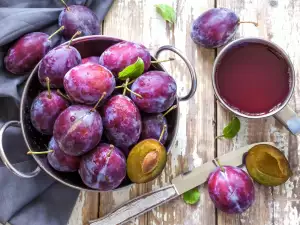
Comments